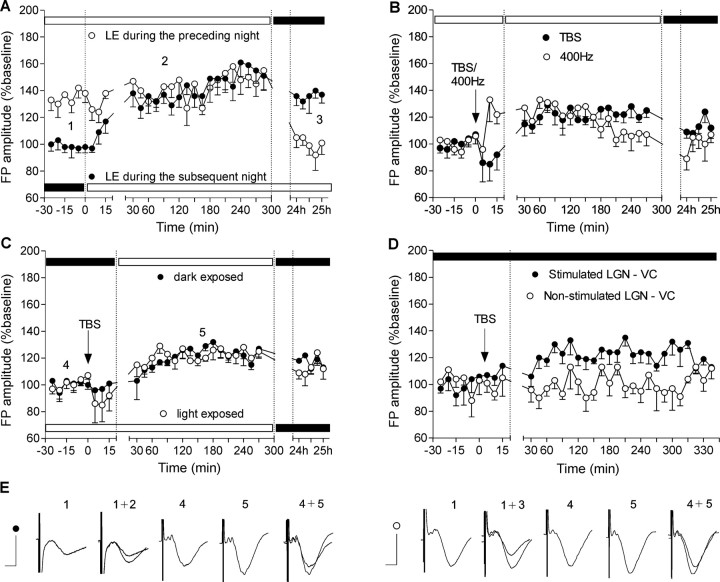Figure 3.
Long-term potentiation in visual cortex depends on the stimulation protocol but not on the activity state. A, Light-dependent modulation of basal synaptic transmission in the visual cortex. Rats were exposed to high-luminance for 4 h in the period before (white symbols) or subsequent to (black symbols) night conditions. An increase of visual cortex basal synaptic transmission was evident because of the light-induced shift in circadian activity of the rats. Horizontal black and white bars here and in subsequent figures indicate the luminance conditions (0.1–10 and 300–500, respectively) during the experiment. B, Different high-frequency stimulation protocols result in different profiles of the induced LTP. Four hundred hertz to dLGN leads to fast onset but unstable and shorter-lasting potentiation in visual cortex compared with TBS-induced slow-onset potentiation. C, Different light exposure before TBS reveals stable LTP that was neither dependent on the light conditions nor on the activity state of the animals. D, Simultaneous bilateral recording of fEPSPs in both hemispheres. TBS was given to the one thalamocortical pathway (black dots), whereas the other was used as an internal control for the induced plasticity. The stimulation was conducted during the dark period of the natural light/dark cycle (0.1–10 lux) to exclude an interference with the diurnal FP augmentation (*p < 0.05). E, Analogs represent FPs evoked at the points marked in the figures. Calibration: 5 ms, 1 mV.

